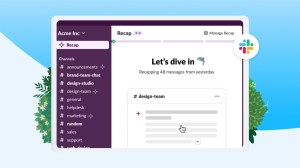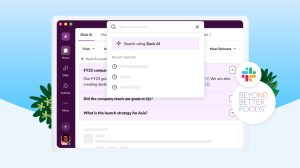Just as organizations start to master providing more personalized products and services, the Fourth Industrial Revolution is moving the goalposts again. Artificial intelligence (AI), connected sensors, and other innovations are making it possible to know what customers are doing in near real time, and to better understand their needs. Smart businesses will strive to be right there to serve them.
That’s the view of Tom Puthiyamadam, the New York-based Digital Services Leader with PwC, who helps organizations transform their business by adopting a digital-first mindset and workforce strategy. In this interview, he discusses the intersection of technology and customer experience and how organizations can use technology to improve performance, while becoming more responsive to their customers and markets.
Q: AI is maturing quickly, and it’s bolstered by other innovations such as the Internet of Things (IoT), enabling companies to deliver better customer experiences. What do you see as a cutting-edge customer experience today, and how do you see that changing?
We ought to start by putting the technological advances you’re talking about in perspective. Consumers’ expectations are rising exponentially as they are bombarded with better experiences in their daily lives, and they’re transporting those expectations to every brand that they engage with. So for a company to hit even some of those expectations is pretty impressive.
But to really make a step change, consumer experiences need to be far more dynamic than they are today. Customer experience professionals love to think about their customer journey maps. But journey maps are very rigid. How many consumers follow the same exact path to get to their outcome? Very few.
I think we’re going to see a world where experiences are not just personalized, which we’ve been talking about for a few years, but also highly dynamic because companies begin to leverage data about you in the moment — what you did in the last 24 minutes or hours, not the last 24 days.
Q: Why will a shorter time horizon lead to a better experience?
It’s contextual. If you know what I did for the last two hours, then you can begin to adapt experiences around me.
Let’s say I’m running a resort. How do I keep up with the movement of my customers? How do I know that you just came out of a workout in our gym? The most delightful thing I could do is give you a cold towel, but do I have that data about you — your heart rate, what your workout schedule was, what you did with us that morning?
A great solution would be to have guests opt in for interacting with an AI-powered digital assistant that knows what they’re doing and can create those experience recommendations. No human being at any hotel would be able to process the data on hundreds or thousands of guests to know what’s the next best thing for that customer who’s sitting at the pool after their workout. They’re not going to know what they need right now.
Traditional approaches were okay when we didn’t have this huge influx of data from sensors such as smartphones. It was okay when we didn’t have AI. But that world was predicated on forcing customers into certain journeys according to preconceived personas. Today, that sounds very rigid.
We need to move from static, rigid consumer experiences defined by journey maps and personas to something that is dynamic — that shifts within seconds and minutes. That way, offers are highly personalized and catered to me in my moment, and what I’ve done, and what I’m about to go do. And in return, companies should be able to charge consumers in different ways for such amazing experiences. It could be a whole new business model.
Q: Why do you think there’s an opportunity for new business models?
Focusing on incremental gains, like using AI to improve customer service, is missing the bigger opportunity. The real opportunity is for companies to rethink their entire business models. We should ask what are we going to do to truly take a consumer experience to a new height where we actually surprise and — I know we use the word so liberally — truly delight the customer?
But to make that happen, companies are going to have to use AI to actually leverage that influx of data — not only to turn it into actionable insights, but to take action on those insights in the moment.
Q: This new direction requires a business to know a lot about its customers. Do you think customers will be happy to provide that much information in return for a better experience? Are there privacy concerns?
It’s going be an evolution and will transition over time, but it’s happening already.
You search on any web browser for any product. Next thing you know, you’re back on the web and you’re getting advertisements for that product. That’s not delighting me. They’re using the data in a way that does very little to empower me as a consumer or to give me a better journey.
But to go back to my other example of a resort where they’re truly understanding you to give you a better experience — that’s something different. Great customer experiences are something people are willing to trade a bit of data about themselves for.
Q: What must organizations do internally to achieve the speed and flexibility needed to deliver these dynamic customer experiences? Do they need to start with breaking down their internal silos?
We have certainly been talking about the need to break down silos for years now — and it’s important. But in this case, it’s more about making sure the connections exist across the many departments that need to be involved to deliver an exceptional customer experience.
The question is: Can AI help drive those 360-degree connections across a company to build that same wonderful experience you delivered when you were just a startup? That was when there was a really close connection between the business, your customers’ needs, and your products.
Q: So over time, as companies grow, their organization gets in the way of their proximity to their customer. But AI might help them better connect their departments to deliver a more seamless experience to their customers, at scale?
That’s the dream. The fact is that we don’t have more time for more meetings. We don’t have time for the next big collaborative working session when we’re trying to just connect the dots, so it’s worth asking whether there is a better, technology-enabled way to connect those dots. We have all this data, all these individuals banging away on their keyboards, yet we still miss out on 80% of the connections that can be made from one person’s effort to another.
For further insights, see the next interview with Tom Puthiyamadam about the importance of continuous learning.















